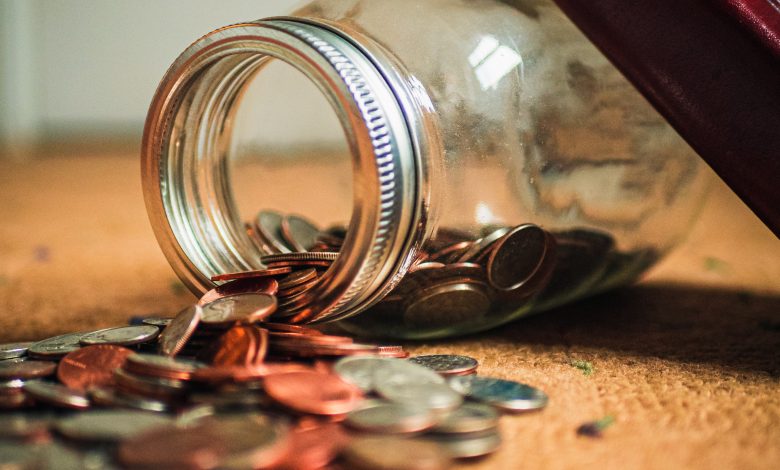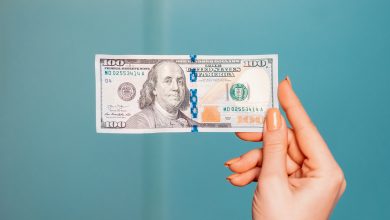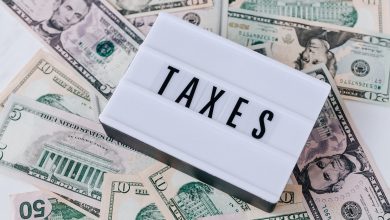What Is Inflation and How Does It Affect Your Personal Finances?

If you’re trying to save money and ensure that you have a good nest egg to fall back upon in your retirement years, it is imperative for you to make a sound financial plan right now. The earlier you make this road map and start following a reliable strategy for saving, the more you save. The more you save, the less anxious you are going to be at retirement time.
One of the key things that you have to figure out when you are making your financial plan is this: How much will you need at retirement? While this depends on your retirement goals, your expected expenses at that stage, your liabilities- current and expected, and your lifestyle preferences, there is also one very significant aspect to factor in before you can chalk up a strategy. You can’t afford to figure out what you will need at retirement based on exactly how much you spend today.
For example, if a family spends $60,000 a year today, can they get by comfortably and sustain the same lifestyle on $60,000 a year, 20 years down the line at retirement? Set aside any excess expenditure at that point for medical bills. Even if you do that the fact is that they can no longer buy the same things in 20 years’ time as they do now with $60,000. That’s because of inflation.
Inflation is what makes things more expensive for you over the years. Let’s tweak the example a bit. Jonah planned way back in 1999 for his retirement in 2019. In 1999, he was spending $40,000 a year on household expenses. He made a financial roadmap that ensured that he would have the same $40,000 in hand annually when he retired. However, thanks to inflation, what he could buy for $40,000 in 1999 no longer fits into that budget. Going by this useful calculator, he will need $61,281.07 to buy the exact same things in 2019 to cover his household expenses completely. Since Jonah did not factor in the impact of inflation when he did his retirement planning, he is going to be in a fix when retirement time rolls by.
The Current State of Inflation
Statistics show that inflation has risen in January 2020 and soared past forecasts to touch 2.49%. It was estimated to stay at 2.4%. In December the previous year, the inflation rate hovered at 2.29%, and in January that year, the low inflation was alarming economists and policy makers alike at a subdued 1.55%. The average inflation in 2019 stood at 1.81%, significantly lower than 2018’s 2.44%.
In addition, gasoline has shown a very steady, steep increase, mainly contributing to the higher inflation in January, but food remained steady with a 1.8% inflation. Clearly, even in a high inflation economy, it is quite possible for certain prices to remain low and not match the overall inflation rate.

What Exactly Is Inflation?
Inflation tells you how the purchasing power of a dollar has decreased over time. Purchasing power refers to what you can buy with one dollar. The opposite of inflation is deflation, and when this happens, you can buy more for a dollar than you used to be able to. While this might sound like a good deal for you, this is really not good news for the country’s economy at large, and governments try very hard to avoid a deflationary economy. They work very hard to turn the economy around and invite inflation back in if signs of deflation are creeping in.
Coming back to inflation, it is a measure of the rate at which the prices of a specific basket of goods are moving over a given time within the economy. It is expressed, as you have seen, as a percentage, and the government loves it when inflation is hovering around 2%, indicating an economy that is growing at just the right pace. If this is the case, then what you can buy today for $10 would cost you $12 next year.
Prices of goods rise in an inflationary environment, and your dollar can buy much less than it could earlier. The public has less purchasing power now. If inflation soars beyond a limit, the economy takes a serious hit because people are not buying things the way they used to, so sellers can’t sell as much. There is a general slowdown in the country’ economic growth. When the inflation is steady and stable, this is an indicator that the money supply with the public and in the economy is growing steadily as well but at a pace that is faster than the growth of the economy. In this situation, the economy does not slow down.
The inflation rate is calculated by the Bureau of Labor Statistics, and they use two indices mainly to do this: the consumer price index (CPI) and the producer price index (PPI). The CPI is also very relevant for you because it addresses the change in price for you, the consumer. The PPI does the same from the seller’s standpoint.

Why the Inflation Rate Matters
For starters, it tells you if you will be able to afford that home you were planning to buy a couple of years down. It tells you if you are equipped to deal with the schooling expenses for the kids in five years’ time. It tells you whether your paycheck can cover all your expenses or not.
Apart from all of this, the inflation rate also tells you what the country’s economic health looks like. The government and central bank of the country uses the inflation rate to see if they need to be stepping in with monetary policy and, if so, what kind, to bring the economy back on track for sustained growth. As we said before, an inflation rate that hovers around 2% is ideal.
Impact of Inflation on You
Inflation has quite a significant impact on the consumer. It causes prices to go up, and that affects the general public in many ways. For example, if you own a home business, an erratic inflation rate makes it impossible for you to predict costs of doing business in future. In this case, how do you know how to price your products so that you still walk away with profit even after paying up for higher cost raw materials? How do you plan ahead for costs of procurement, warehousing, or transport or employees salaries? An erratic inflation rate throws things out of sync quite drastically. A steady inflation rate, the sign of a healthy economy, allows you to make plans ahead for all of this.
It is not just for business owners that inflation plays a significant role. It is equally important for your personal finances as well.
Impact on Interest Rates
The most significant way in which inflation affects your personal finances is by having a huge influence on the interest rates you can earn. It is this impact that has the biggest impact on your wealth and your potential to build your wealth in the future as well.
The Federal Reserve tweaks the federal fund rate based on inflation, and this rate lays the foundation for interest rates across the U.S. If the federal rate is low, the banks tweak their rates accordingly and keep their interest rates low on their offerings. The money in your bank deposits and other fixed duration instruments follow suit and dip. You are effectively making less money off your savings now. That’s a big impact on your present and future wealth because you are not able to multiply your wealth as quickly.
Keep in mind one very crucial fact here. The current interest rate (which is impacted by current inflation) may also be affecting your existing savings rather harshly if the rates go down. If you have savings in a variable rate instrument, the rate of return offered mirrors the prevailing rates. When the rate dips, not only can you invest now only at low rates, your old variable interest savings also yield less because the interest on those is now matching the prevailing one.
Also, if your savings in fixed return instruments mature and you have to reinvest, at this point, you have a low interest rate environment and that means one of three things. You either:
- Park the funds in a savings account with poor interest until the rates improve, which means you restrict your returns for a while
- Invest in a lower interest fixed interest instrument at the lower prevailing rates and subdue the potential of the wealth to multiply
- Or invest in a variable interest instrument that comes with a risk of yielding even worse returns if the rate should dip further down.
Whichever of the three options you choose, the potential to multiply your wealth is compromised.
If we are thinking of the retirement nest egg example from before, this means you have to save more to make your nest egg as big as you would like it to be because money multiplies more slowly now. So you end up either saving more of your paycheck, leaving less for current expenses, or you have to find avenues to earn more.
Impact on Debt
Depending on the inflation, the federal fund rate is changed. When the rate rises, banks raise their rates too, and that goes for lending out money as well. Say for example, if you are looking to buy a house at this point, then your loan is going to be really expensive, and it will burn a larger sized hole in your pockets now. So you have less money to spend on your hands because you are paying out much bigger installments to cover the much higher interest charged on your loan. With less money on your hands to spend, you save less as well. Ultimately this affects your personal finances as a whole. Your savings rate, your spending power, and your lifestyle are all affected.

Impact on Cost of Living
Your personal finance road map probably has a monthly budget, nicely structured with a schedule of payments so you know exactly how much you will spend each month on various items, and going from there, you know how much you can save, use for your entertainment, or spend on luxuries. Now with inflation rising, prices rise too. So gas is costlier, and so is food, clothing, rents, and pretty much everything else. Now your nicely laid out monthly budget is all skewed because none of the expenses are quite matching what you had planned for. With your monthly expenditures begin rocketing, your whole personal finance road map needs to be re-assessed and redone. Chances are, in a high inflation environment, you won’t be saving much at all. In fact, your savings may be zero.
If you have a big expenditure coming up that is unavoidable, you will end up dipping into savings, and that sets your retirement planning back by a significant amount if the expenditure to meet is large. If you don’t have enough savings, you may have to take out a loan, which further burdens your finances. Such a loan is unexpected too and so is the outlay that it requires on a regular basis by means of pay outs. It probably isn’t factored into your budget at all, and you may have to cut back on your savings to manage it.
Impact on Stock
If much of your portfolio is invested in stock, there is both good and bad arising from inflation. The stock market does have its own inherent risks, far greater than risks that you encounter in treasury bonds or fixed return instruments. However, stocks are also more adaptable to the economy, and hence, to a certain extent they give you better returns than more risk-free instruments in times of rising inflation since stocks usually outdo the pace at which inflation rises.
However, what you need to understand here is that the stock value hinges on the company’s performance. The better the company is doing, the more its profit margin and the better your stock price and the return it yields by way of dividends. A strong economy typically has a higher inflation rate. In such an economy, the company’s revenue is higher, profits are higher, and your stock is more valuable too. That’s the good part.
Now, if the inflation continues to soar, things start getting slightly less favorable for you. With soaring inflation, all costs rise. That goes for staff wages, raw material, production costs, shipping costs, and everything else too. So the company’s costs begin to rise in tandem with the general price increases across the board. Now. the company’s profits are not looking quite as good as they did earlier. So the stock value begins to dip and so do dividends.
Impact on Fixed Return Instruments
When it comes to these fixed return instruments, they are the best thing for you if the interest rates fall and you have already invested in them at a point when a higher interest had prevailed. In such a situation, when the current interest is lower than the one you have your fixed return investments locked into, you are getting more than you can hope to if you invest now.
However, if the inflation is soaring, costs are going up, and you are spending more than usual, then your fixed income instruments are not helping much. They yield the same return now as always, and that is not quite enough to cover your increased costs. Again, a steady increase in inflation is a good situation to have, but soaring inflation restricts your ability to manage your budget and ensure you are saving as much as you would like to month after month.



